
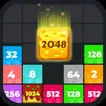
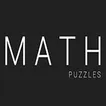


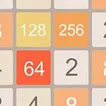



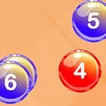
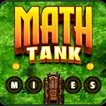
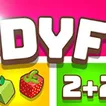


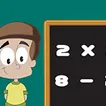

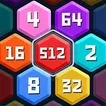
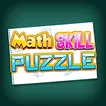


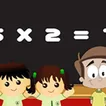

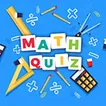




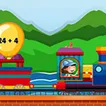


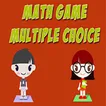
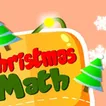








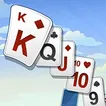



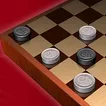








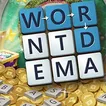
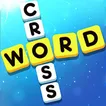























Math Games: Cool, Interactive Learning for All Ages
In a world where education and technology intersect, interactive math games have emerged as a vibrant tool to spark a love for numbers among learners from pre-K to 8th grade. These games transform the often daunting subject of mathematics into a playground of fun challenges, where students can explore and learn at their own pace. By turning abstract concepts into visual and hands-on experiences, math games make the learning process both engaging and enjoyable.
The beauty of these interactive platforms lies in their design, which meticulously aligns with educational standards. This ensures that while students are immersed in the thrill of the game, they are simultaneously reinforcing their mathematical knowledge and skills. From solving puzzles to embarking on number-based adventures, each game is crafted to build a solid foundation in math without the monotony of traditional teaching methods.
As children navigate through these digital landscapes, they encounter a variety of mathematical problems that are cleverly integrated into the gameplay. This integration allows for a seamless learning experience, where the line between playing and learning is beautifully blurred. The result is a more profound understanding of math concepts, fostered in an environment that celebrates curiosity and encourages problem-solving.
Interactive math games are more than just a pastime; they are a gateway to mastering math in a world where education is evolving. By capturing the imagination of young minds, these games lay down the groundwork for a lifelong appreciation of mathematics. They prove that learning math doesn’t have to be a chore; it can be an exciting journey that is as cool as it is educational.
Cool Games Math Games: Personalizing Education
Math games are revolutionizing the educational landscape by offering personalized learning experiences that cater to the unique needs of each student. These interactive platforms are equipped with adaptive technology that adjusts the difficulty level based on the learner’s performance, ensuring that every child is challenged yet not overwhelmed. This personalized touch not only helps students to engage with the content at their own pace but also empowers them to take control of their learning journey.
The ability to track progress is another cornerstone of these math games, providing both students and educators with valuable insights into individual learning patterns. With real-time feedback and progress reports, learners can identify their strengths and areas for improvement, setting achievable goals for themselves. This level of customization keeps students motivated and invested in their math education, as they can see tangible evidence of their growth and accomplishments.
Moreover, the personalization of math games extends to the variety of learning styles they accommodate. Whether a student thrives on visual learning, hands-on activities, or auditory cues, there’s a math game designed to engage their preferred method of learning. This inclusivity ensures that every child has access to a math education that resonates with them, making the subject matter more relatable and less intimidating.
In essence, the personalization offered by cool math games is pivotal in keeping math learning engaging and effective. It acknowledges that each student is an individual with distinct learning needs and preferences, and it provides a flexible framework that can be tailored to fit every learner. As a result, math games are not just a means of education; they are a dynamic and interactive way to inspire a passion for mathematics in students of all ages.
Grade-Specific Math Skills Development with Cool Games for Math
Interactive math games are ingeniously designed to cater to the developmental needs of each grade level, ensuring that every child is met with the right challenges at the right time. These games offer a structured approach to math education, presenting a curated selection of skills and topics that align with the curriculum of each grade.
For the youngest learners in pre-K and kindergarten, the games focus on fundamental concepts such as counting, shapes, and basic addition and subtraction. As students progress to the elementary grades, the games grow with them, introducing multiplication, division, and the beginnings of geometry and fractions. By the time they reach middle school, these interactive platforms cover an array of more complex topics, including algebraic thinking, data analysis, and advanced problem-solving strategies.
This grade-specific progression is crucial in building confidence and competence in mathematics. It allows students to build upon their knowledge incrementally, which is essential for mastering more complex mathematical concepts later on. The games are designed to challenge students just enough to keep them engaged without causing frustration or discouragement.
Moreover, these math games make it possible to revisit and reinforce skills as needed, providing a resource for students to practice and perfect their abilities. The interactive nature of the games also means that learning can be self-directed, giving students the opportunity to explore areas they find most interesting or challenging.
In summary, cool games for math provide a supportive and tailored learning environment that grows with the student. By offering grade-specific challenges, these games ensure that each child is developing the mathematical skills appropriate for their level, paving the way for academic success and a deeper understanding of the world of numbers.
Ad-Free Learning Environments in Cool Math Games
One of the most significant advantages of cool math games is the creation of ad-free learning environments. These platforms prioritize the educational experience by eliminating the distractions that often come with advertisements. By doing so, they foster a space where concentration and focus can flourish, allowing students to fully immerse themselves in the mathematical challenges at hand.
The absence of ads means that learners are not pulled away from their problem-solving activities by flashy, unrelated content. This is particularly important for young minds that can easily be sidetracked, which can disrupt the learning process. An ad-free environment ensures that the flow of learning is continuous and that students remain engaged with the educational material.
Moreover, the removal of advertisements enhances the safety and security of the learning space. Parents and educators can have peace of mind knowing that children are not exposed to potentially inappropriate material or at risk of clicking on links that could lead them away from the safe confines of the educational platform.
The clean, focused interface of ad-free math games also contributes to a more conducive learning atmosphere. Without the clutter and noise of ads, students can navigate the games more easily and intuitively, which promotes a more enjoyable and effective learning experience. The simplicity of design puts the emphasis on learning, ensuring that the math problems themselves are the stars of the show.
In conclusion, the ad-free environments of cool math games are essential in maintaining student focus and minimizing distractions. This approach to digital learning respects the attention span and well-being of students, providing a pure educational experience that is both productive and enjoyable. It’s a testament to the commitment of these platforms to deliver high-quality, uninterrupted education that truly puts the needs of the learner first.